Acrylic pour art has been a trend in the online art community for many years, you will see this satisfying and often beautiful paintings being created by influencers on Instagram, Youtube and TikTok with millions of views. Acrylic pour paintings reached a new height during the coronavirus lockdowns as many people suddenly found themselves with free time to practice new hobbies, creating an abundance of these vivid paintings.
 Above: an orange, white and blue acrylic pour artwork
Above: an orange, white and blue acrylic pour artwork
Acrylic pour paintings can be damaged or begin to fail like any artform, especially as it is often created as a hobby and without tried and tested techniques to ensure the paint layer is secure. But even the most talented or experienced acrylic pour artist may find that their work begins to break away from the canvas, ripple, blister, or crack over time. In this article we will look into the creation of acrylic pour art, as well as how to avoid disasters from the point of view of art conservation specialists.
What is acrylic pour art?
Acrylic pour art is the act of directing pouring a thin or medium consistency acrylic paint onto a canvas, allowing the paint to flow freely into an abstract pattern with various colours and layers.
The canvas can be moved in order to control the flow of the paint, or a brush or tool can be used to manipulate the paint layer. The finished piece is often a vivid and dynamic artwork with a completely unique movement of the paint on the canvas.
Artists who focus on acrylic pours or similar techniques are sometimes called ‘Fluid Artists’ and may have a massive following worldwide for their attractive and popular paintings.
 Above: an acrylic pour artwork with blue, green, teal and pink paints
Above: an acrylic pour artwork with blue, green, teal and pink paints
Famous fluid artists to look out for
- Hannah Collins
- Kristen Herrington
- Emma Lindstrom
- Briana Coleman
- Wendy Stroik
- Brittany Zick
- Nancy Wood
- Britany Baum
- Kari Hertzog
- Callen Schaub
- Tatiana Mack
- Jenelle Elizabeth
- Jennifer Krol
- Kelly Johnson
- Evgenia Suvorova
- Brittany Akers
 Above: a vivid acrylic pour artwork with pink, fuchsia, black, blue and orange paints
Above: a vivid acrylic pour artwork with pink, fuchsia, black, blue and orange paints
Creating successful acrylic pour paintings
Much of the success of acrylic pour art comes down to the type of paint which is used. As you will be pouring the paint it is key that you have the correct consistency, this will be thicker than water but thinner than traditional acrylic paint. We recommend acrylic inks, fluid acrylics, or soft body paints for the best finish.
Thicker acrylic paints can be used if they are thinned out with water and a pouring medium, but only a small amount should be added to avoid the risk of a very thin or watery paint layer which may not flow or dry correctly. You may also find that using a heavy paint will require a lot of mixing to create the right consistency, but in doing so this may create bubbles and air pockets which will disturb the finish of your artwork.
 Above: choosing the correct type of paint and materials is important for a secure result
Above: choosing the correct type of paint and materials is important for a secure result
For a smooth finish, a pouring medium is required. Not only does a pouring medium leave an even surface, but it also works to reduce the amount of bubbles in the paint. You can find pouring mediums which are specifically designed for acrylic paints – these are preferable for reducing risk of failure as they are designed for the process. However, some artists use PVA glue – this is a little riskier, but may be used in acrylic pour art by those who are just starting out as an easier and cheaper alternative. The perfect measurements for pouring medium are 250ml for every tablespoon of paint, or two parts PVA glue to acrylic paint.
 Above: paints can be loosely mixed and poured or mixed to create a new colour, it is important to select colours before you begin and tailor the mixture for each one
Above: paints can be loosely mixed and poured or mixed to create a new colour, it is important to select colours before you begin and tailor the mixture for each one
A strong and well-tensioned canvas or board is important, as the weight of the paint may put pressure on the backing and cause an uneven dent or pooling. A moveable canvas may also lead to a flexible surface, creating a paint layer which is easily cracked and damaged once the piece has dried.
It is of the utmost importance that the canvas is prepped before beginning the pouring process, as the acrylic pour will have weight to it and may fall away from the canvas if it is not properly adhered. Clean the surface to make sure there is no dust, debris or grease present, before applying a layer of gesso to help the painting stick. Gesso is a traditional chalky material which has been used by artists for centuries to ensure their painting is stable.
 Above: this acrylic pour has many bubbles in the paint which may lead to an unstable or uneven paint layer when dry
Above: this acrylic pour has many bubbles in the paint which may lead to an unstable or uneven paint layer when dry
The canvas should be elevated slightly when you are ready to pour, this will allow for it to be easily moved when dry and avoid it sticking to a table or any protective papers.
Acrylic pour paintings should be left to dry for 24 to 72 hours before being moved, depending on how thick they are. The use of hot air from a hair dryer or heating units should be avoided as it may disturb the paint layer and cause it to bubble, crack, or completely fail. The painting should be kept as still as possible to avoid disturbing the pattern, it should also be covered by a spacious box or covering to prevent dust and debris becoming stuck on the sticky surface.
 Above: a vivid pour artwork which has considered the colours and precise amount of each paint required for a cosmic effect
Above: a vivid pour artwork which has considered the colours and precise amount of each paint required for a cosmic effect
What causes acrylic pour art to fail?
High temperatures and high humidity affect all artworks, so acrylic pour art is no exception. Dramatic changes in atmosphere during or after the creation of an artwork can put it under strain, as can continuously high temperatures or humidity levels. An even temperature of around 20 degrees and a humidity of 40% is ideal in avoiding damage.
Acrylic pour art may crack due to the consistency of the paint itself, this can happen if it is too thick or too thin. The best consistency is similar to cream or honey. If the paint is too thick the surface may dry a lot faster than those beneath it, leaving one part of the artwork dry and the other flexible and liquid. If the paint is too thin, the binding medium may deteriorate and stop it from holding together, creating cracks between the paints or within one colour.
 Above: an acrylic pour painting which has developed cracks after drying
Above: an acrylic pour painting which has developed cracks after drying
Lumps and bumps may appear on the surface if an old paint or pouring medium is used, therefore it is recommended that certain binders or pouring mediums are strained before use. Rippling and warping of the paint may occur due to it being picked up too early (before drying fully) or due to a weak canvas which is bending under the weight and requires support.
A lifting and unstable paint layer can be caused by a canvas or board not being properly prepped, due to the artwork not having long enough to dry, or due to the sheer weight of the paint. When pouring it is important to have a plan of action, as not to improvise to the point of an overly thick paint layer which will take a very long time to dry, if ever. A very thick surface might remain sticky and attract dust particles and debris as soon as it is exposed to the air.
How to avoid a failed or broken acrylic pour painting
DO use a good quality paint and pouring medium
DO use a support behind a canvas or ensure it is well tensioned
DO create and test a mixture for each paint colour which is used
DO have a plan before you begin your artwork
DO prepare your canvas or board with gesso or an acrylic primer
DON’T move the artwork before it is fully dried
DON’T overload the canvas with paint, as this might never dry
DON’T leave a pour artwork uncovered whilst drying
DON’T use a thin or porous surface such as paper
DON’T push against the surface or reverse of a painted canvas
 Above: an acrylic pour artwork before drying with large bubbles forming in the surface
Above: an acrylic pour artwork before drying with large bubbles forming in the surface
How do I display and protect acrylic pour art?
If you have purchased a piece of acrylic pour art, it may not be in your control whether or not the original artist has completed the recommended steps for a safe and successful artwork. However, you can avoid accidental damages through gentle handling of the piece and the correct display.
Acrylic pour art should not be displayed in direct sunlight, as the heat and UV rays could have an adverse effect on the paint, in some cases disturbing the chemicals or causing an atmospheric fluctuation which leads to cracking. We recommend placing the artwork in a professionally fitted frame behind glass, as such a thick paint layer may remain sticky and attract dust very quickly.
 Above: it is important to display acrylic pour art away from direct sunlight and in a location with even temperature and humidity
Above: it is important to display acrylic pour art away from direct sunlight and in a location with even temperature and humidity
Glass is also recommended as the surface of acrylic pour art is not always varnished and is therefore openly exposed to accidental spills, staining or scratching.
Even temperatures of 20 degrees celsius and around 40% humidity are still recommended when the piece is on display, as well as during its creation. This is important as it will avoid any damages which occur due to an extreme or changeable atmosphere, including blistering, cracking, or more drastically flaking.
 Above: blue and black acrylic art with very precise placement of paints
Above: blue and black acrylic art with very precise placement of paints
Can acrylic pour paintings be restored?
Yes, an acrylic pour painting can be professionally restored by a conservator. Our team specialise in all paintings, this includes contemporary pieces of any variety.
A cracking or broken paint layer can be gently reapplied and adhered to the canvas or board with an injection of specialist fluid, where appropriate a heat treatment can also be applied to consolidate any instability. Next, the cracks can be filled with a plain white substance to create a strong and even surface.
 Above: acrylic pour art can sometimes be formed to look like planets with a star filled background
Above: acrylic pour art can sometimes be formed to look like planets with a star filled background
The cracked areas, now filled, can then be retouched with precisely matched pigments. To get the same effect, artistic skill is used, and if there are large areas of damage a small funnel can be used to fill in any visual disturbance with a matching shade or combination of colours.
In some cases, the artist themselves may want to help with the final step, in which case our team can stabilise the artwork and return it for a new approach in the artist’s studio or at home if this is a personal project. Some artists or hobbyists may choose to fill these cracks with gold, similar to a Japanese kintsugi repair which is used on broken ceramics, or to bring in a completely new colour.
 Above: a bright acrylic pour painting with vivid blue and orange shades
Above: a bright acrylic pour painting with vivid blue and orange shades
How can we help?
If you have any questions about acrylic pour art, or have damaged acrylic pour paintings in need of restoration, please get in touch with our helpful team who will be happy to assist.
To get in touch please email us via [email protected] or call 0207 112 7576.

 Above: an orange, white and blue acrylic pour artwork
Above: an orange, white and blue acrylic pour artwork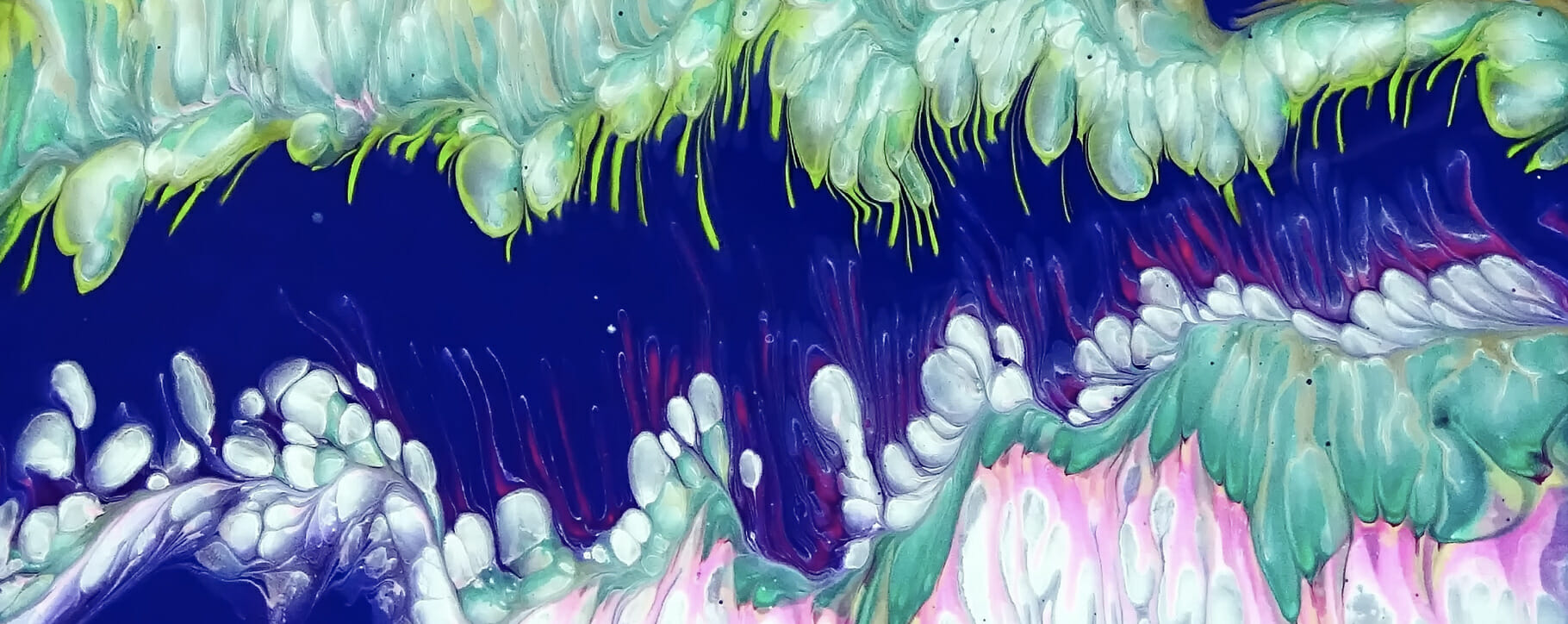 Above: an acrylic pour artwork with blue, green, teal and pink paints
Above: an acrylic pour artwork with blue, green, teal and pink paints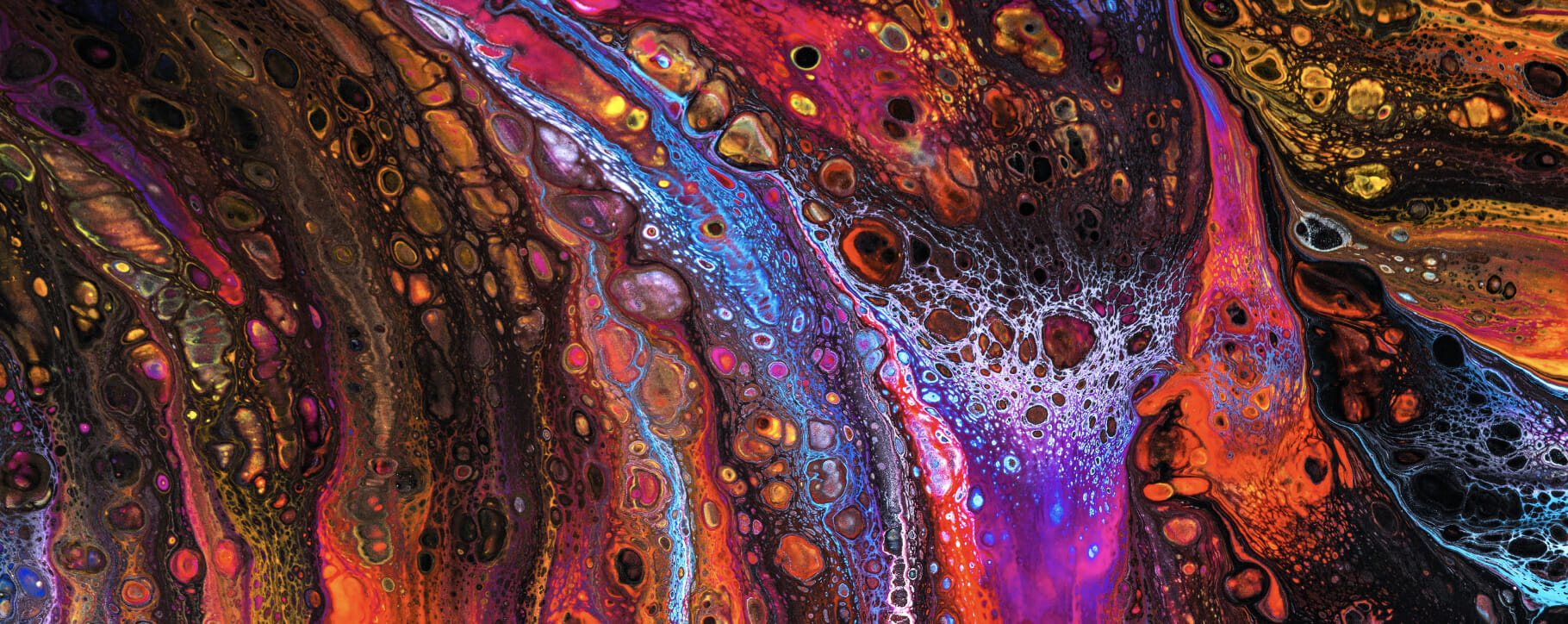 Above: a vivid acrylic pour artwork with pink, fuchsia, black, blue and orange paints
Above: a vivid acrylic pour artwork with pink, fuchsia, black, blue and orange paints Above: choosing the correct type of paint and materials is important for a secure result
Above: choosing the correct type of paint and materials is important for a secure result Above: paints can be loosely mixed and poured or mixed to create a new colour, it is important to select colours before you begin and tailor the mixture for each one
Above: paints can be loosely mixed and poured or mixed to create a new colour, it is important to select colours before you begin and tailor the mixture for each one Above: this acrylic pour has many bubbles in the paint which may lead to an unstable or uneven paint layer when dry
Above: this acrylic pour has many bubbles in the paint which may lead to an unstable or uneven paint layer when dry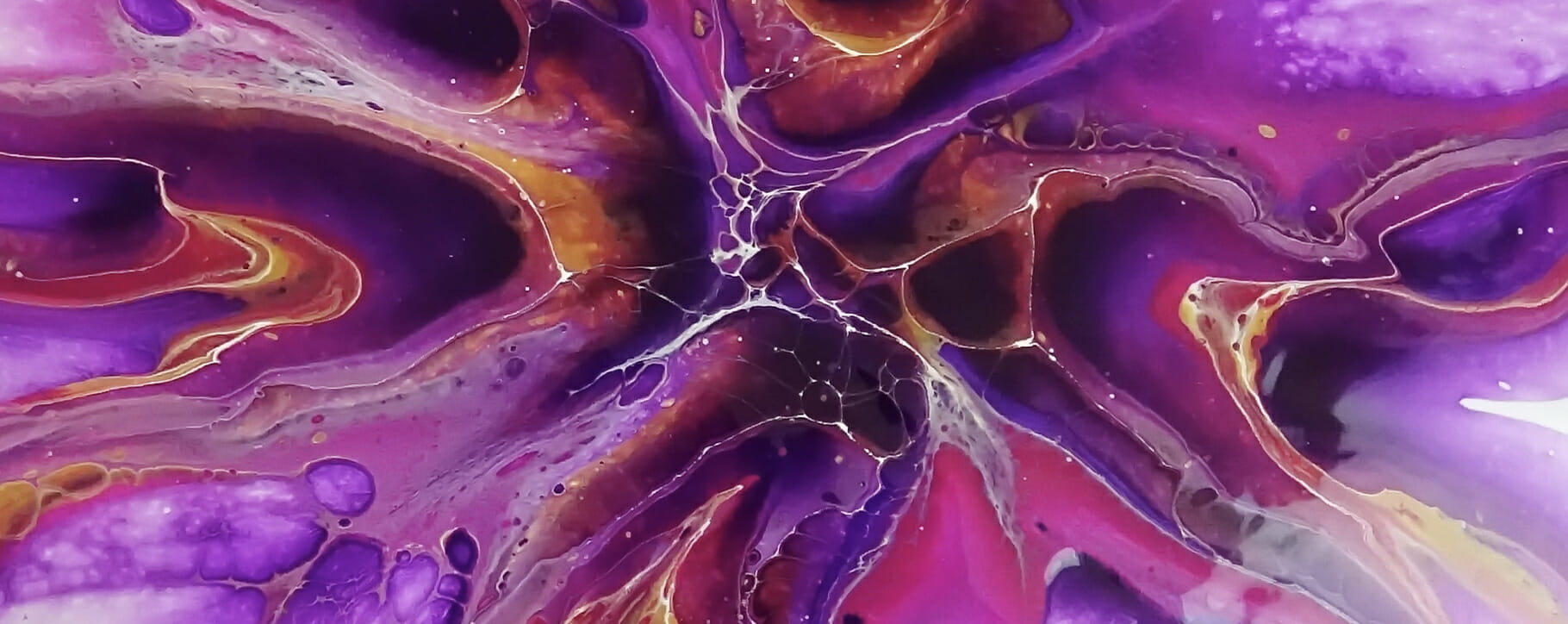 Above: a vivid pour artwork which has considered the colours and precise amount of each paint required for a cosmic effect
Above: a vivid pour artwork which has considered the colours and precise amount of each paint required for a cosmic effect Above: an acrylic pour painting which has developed cracks after drying
Above: an acrylic pour painting which has developed cracks after drying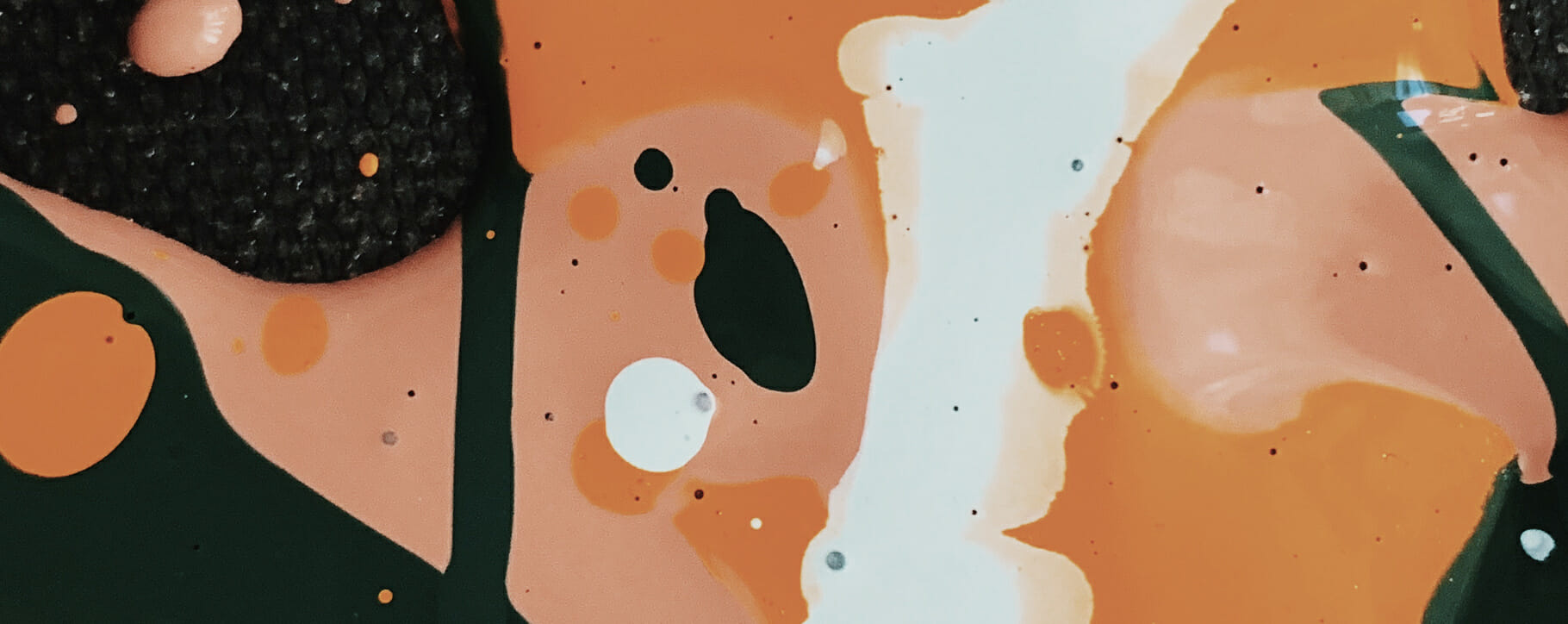 Above: an acrylic pour artwork before drying with large bubbles forming in the surface
Above: an acrylic pour artwork before drying with large bubbles forming in the surface Above: it is important to display acrylic pour art away from direct sunlight and in a location with even temperature and humidity
Above: it is important to display acrylic pour art away from direct sunlight and in a location with even temperature and humidity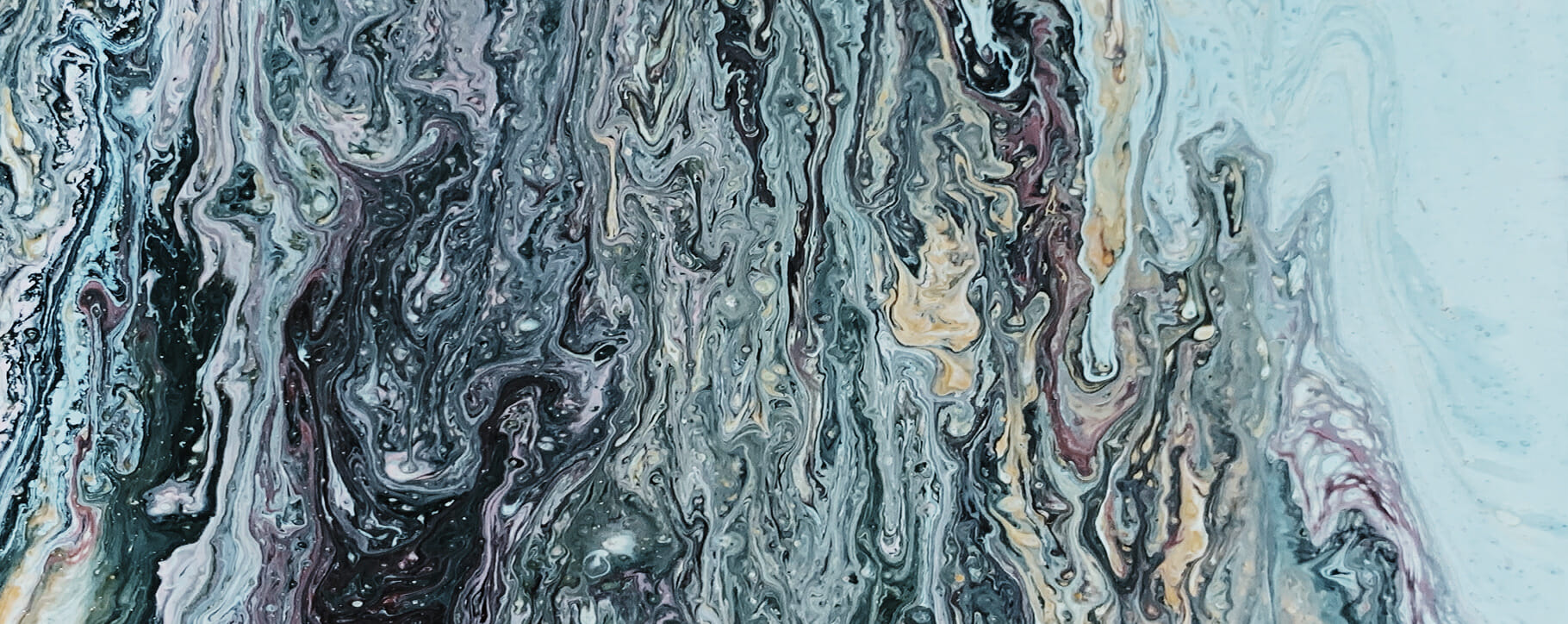 Above: blue and black acrylic art with very precise placement of paints
Above: blue and black acrylic art with very precise placement of paints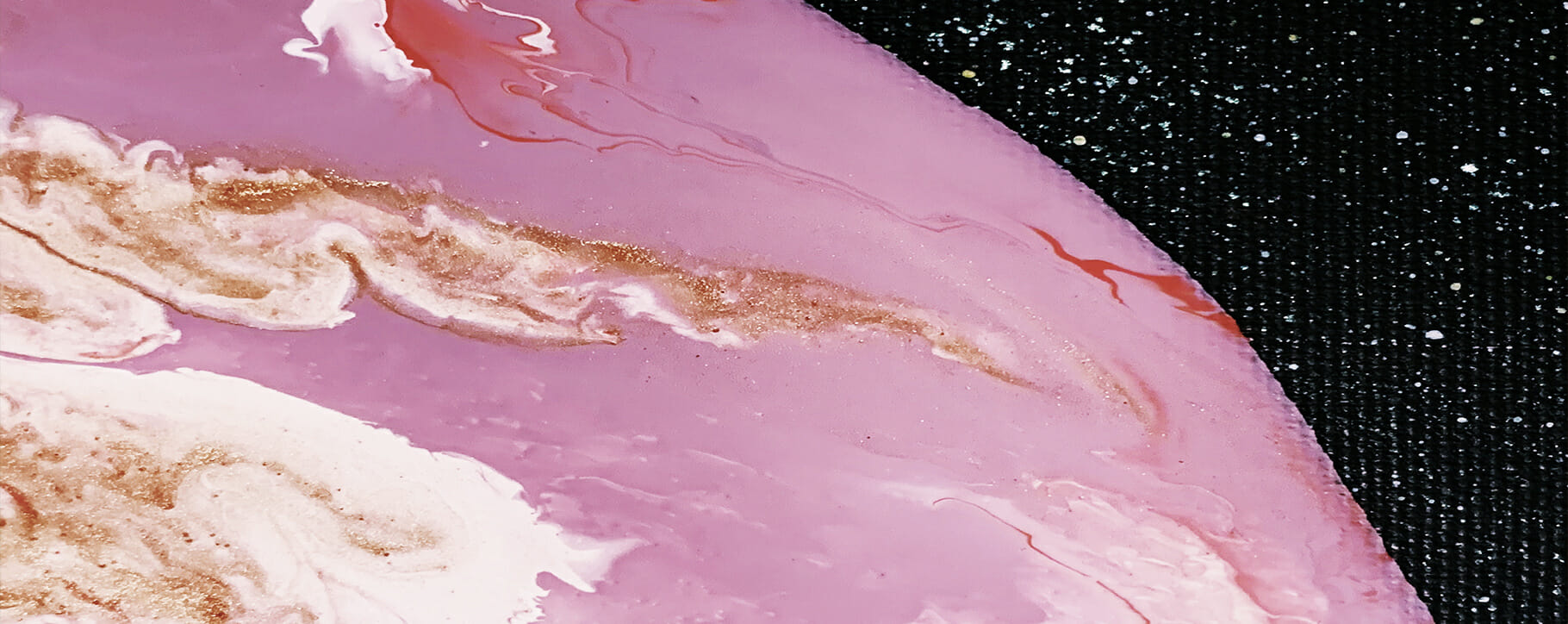 Above: acrylic pour art can sometimes be formed to look like planets with a star filled background
Above: acrylic pour art can sometimes be formed to look like planets with a star filled background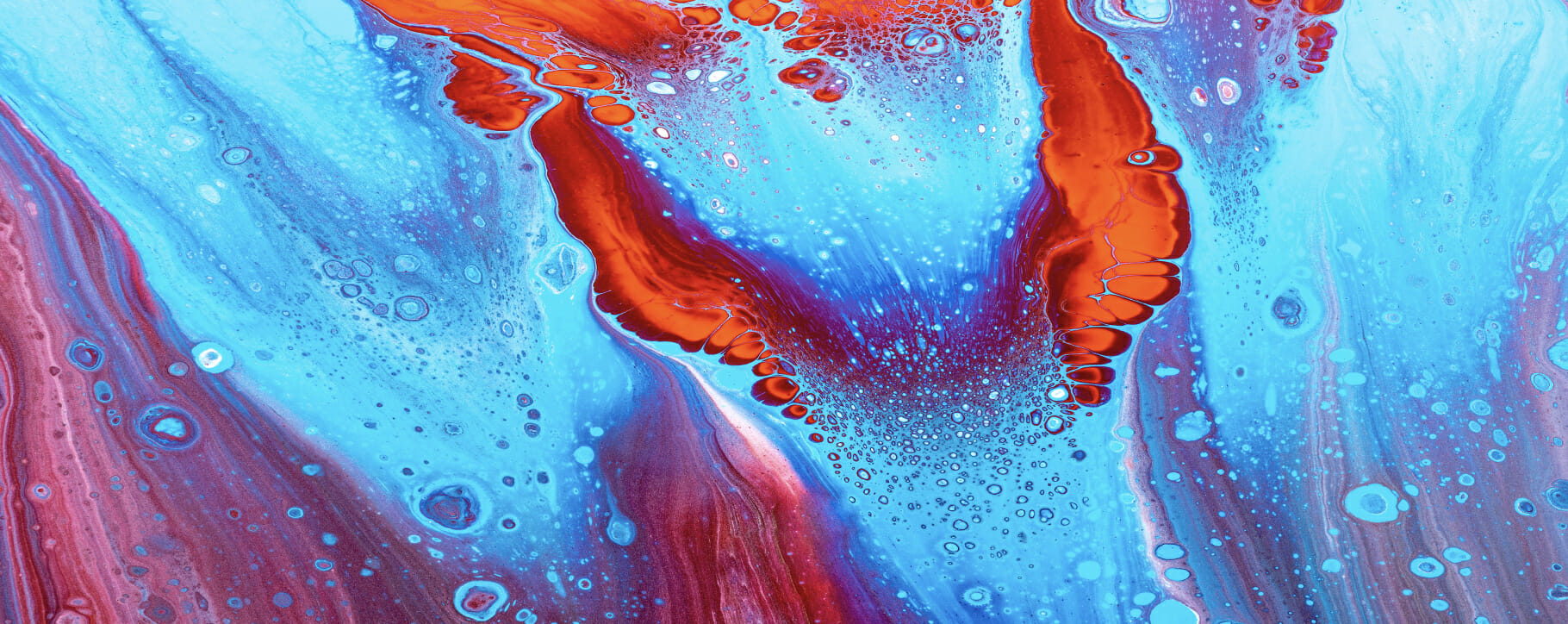 Above: a bright acrylic pour painting with vivid blue and orange shades
Above: a bright acrylic pour painting with vivid blue and orange shades




